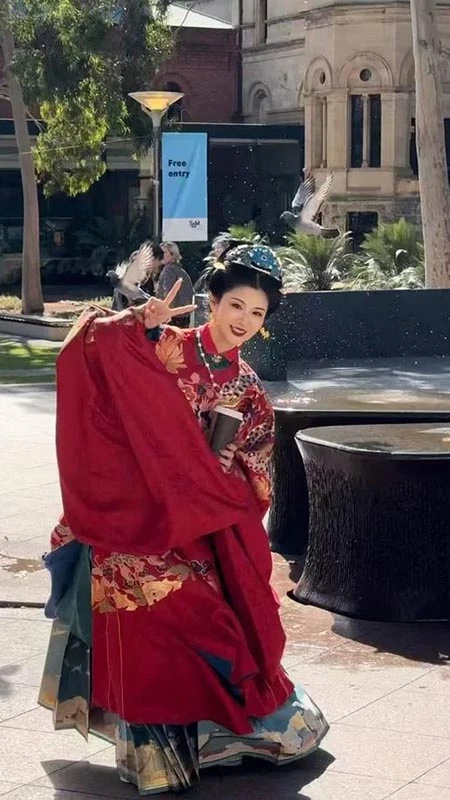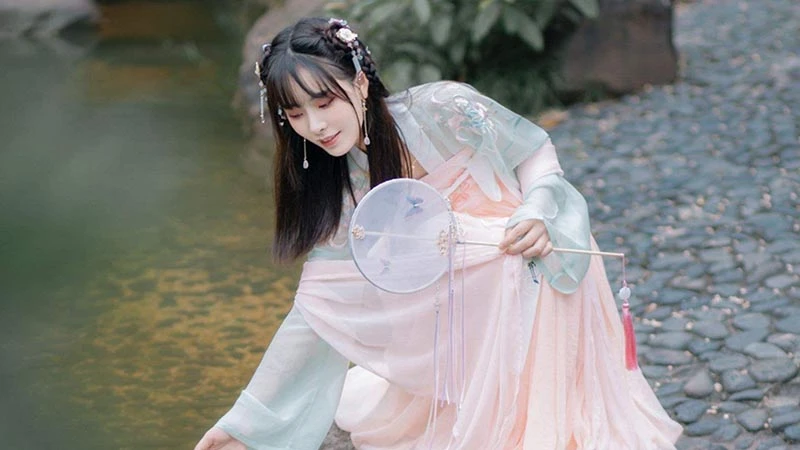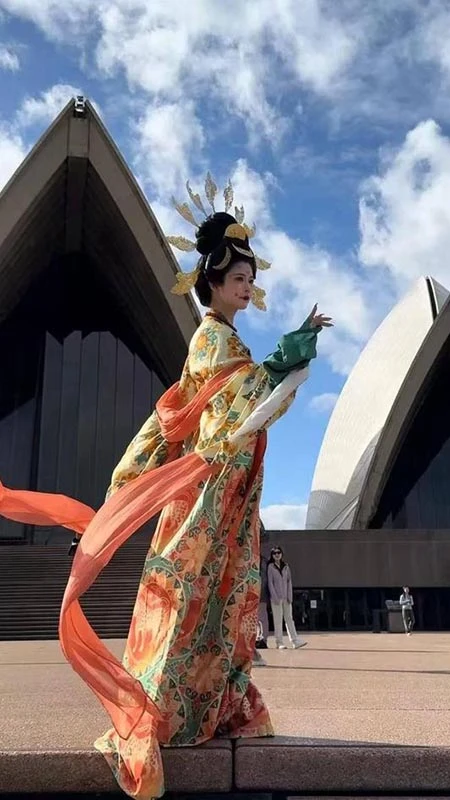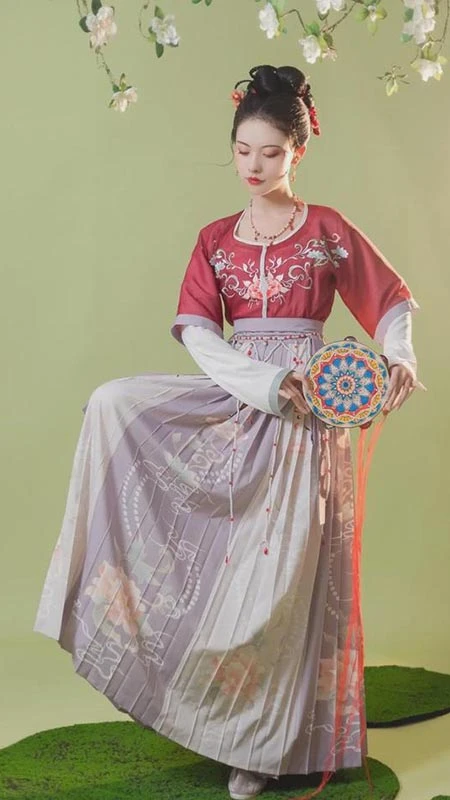In recent years, the ancient beauty of Hanfu, the traditional attire of China, has transcended its niche roots to become a global sensation. With hashtags like “Sharing the Beauty of Hanfu with the World” trending across social media, Hanfu has emerged as a symbol of cultural pride and a bridge between history and modernity. This revival is fueled by passionate advocates, like influencer Zhou Sisi (周思思) better known as “Si Miao (思喵) hose journey into the world of Hanfu exemplifies the blend of history, art, and personal expression fueling this movement.

Zhou Sisi, a renowned Hanfu blogger with over 400,000 followers across platforms, recalls her first brush with Hanfu as a fascination with its aesthetic appeal. However, her interest deepened as she delved into the history behind these garments.
“When I first started wearing Hanfu, I only admired its beauty,” Zhou explained. “But as I explored its historical roots, I became captivated by the eras it represented.”
Zhou’s preferred styles include Tang and Ming dynasty recreations, each offering unique insights into the people and culture of those periods. For instance, Tang dynasty Hanfu, with its flowing and inclusive designs, reflects the openness and grandeur of one of China's most cosmopolitan eras. By contrast, Ming dynasty Hanfu, influenced by the colder climate of the Little Ice Age, features higher collars and heavier fabrics, symbolizing warmth and prosperity.
This historical dimension gives Hanfu wearers a tangible connection to their heritage. Zhou often recreates outfits based on museum archives or historical references, investing in garments priced anywhere from a modest $15 to custom pieces costing over $2,000. “It’s not just clothing—it’s a conversation with history,” she said.
Bringing Hanfu to the World
Zhou’s passion for Hanfu has extended far beyond China. She shares her love for the attire through videos and travels, wearing Hanfu in countries like Australia, France, and Japan. Her viral videos, such as one where she introduces Hanfu to foreign tourists while wearing an elaborate Ming-style wedding outfit, have drawn international attention.
However, this global exposure comes with challenges. “Many times, when I wear Tang-style Hanfu, people assume I’m Japanese, and when I wear Ming-style, they think I’m Korean,” Zhou shared. While these misunderstandings could be frustrating, Zhou takes them as opportunities to educate others about Chinese culture.
To make her origins clear, Zhou even started wearing a badge labeled “I’m Chinese” during her travels. This simple gesture has sparked countless conversations, photos, and newfound appreciation for Chinese heritage among people from different cultures.
A Growing Movement of Cultural Pride
Hanfu’s resurgence is not limited to individual enthusiasts like Zhou. It represents a broader movement among younger generations embracing their cultural roots with pride. Zhou notes that her events attract participants from diverse age groups, ranging from teenagers to seniors, and even include international fans.
One notable interaction involved a U.S.-based mother and daughter who reached out via social media to learn about the Hanfu designs Zhou showcased in her videos. The daughter’s photo in Hanfu, shared in the comment section, was met with admiration and detailed explanations from Chinese users about the origins and features of the style.
“This sense of community, where people unite to celebrate and share our culture, is incredibly fulfilling,” Zhou said. “Seeing foreigners and Chinese alike appreciating Hanfu makes me hopeful about its future.”
Preserving Culture Through Everyday Wear
For Zhou, Hanfu is more than a trend—it’s a statement of identity and pride. She believes the simplest way to preserve and promote Hanfu is to incorporate it into daily life.
“Wearing our traditional clothing out in the world is the best way to keep it alive,” she explained. Zhou’s approach resonates with many young people who are blending Hanfu with contemporary fashion to make it more accessible and wearable.
Hanfu’s journey from historical relic to modern fashion statement highlights its enduring allure. It not only embodies China’s rich heritage but also symbolizes the creativity and confidence of its youth. As more people worldwide fall in love with Hanfu, this cultural treasure continues to inspire awe and connection, proving that history can indeed be both beautiful and timeless.
Niche Hobby and Mainstream Fashion
The rising popularity of Hanfu reflects a broader trend of cultural revival in China, where young people are increasingly embracing traditional elements in their modern lives. Once considered niche, Hanfu is now seen at festivals, on university campuses, and even in casual outings. Brands and designers are blending Hanfu’s traditional elements with contemporary aesthetics, creating styles that appeal to a wider audience.
This shift has also opened up new opportunities in industries like tourism, fashion, and media. Zhou herself collaborates with brands and cultural organizations to promote Hanfu-themed events, and her presence at global venues demonstrates how traditional attire can captivate modern audiences.
Social media platforms have been instrumental in amplifying this movement. Viral videos showcasing Hanfu’s versatility and charm inspire viewers worldwide to explore their own connections to cultural heritage. The comments and messages Zhou receives from both Chinese and international fans affirm that Hanfu has become a universal symbol of beauty, history, and identity.
Looking ahead, Zhou hopes the Hanfu movement will continue to thrive as a beacon of cultural pride. She believes that the integration of Hanfu into everyday life is the key to its preservation. Beyond fashion, Hanfu embodies the values, artistry, and resilience of Chinese civilization, offering lessons and inspiration for future generations.
“When young people wear Hanfu, they’re not just wearing clothes; they’re wearing their history and their story,” Zhou said. “This is what makes Hanfu so powerful—it connects us to our roots while allowing us to share them with the world.”



